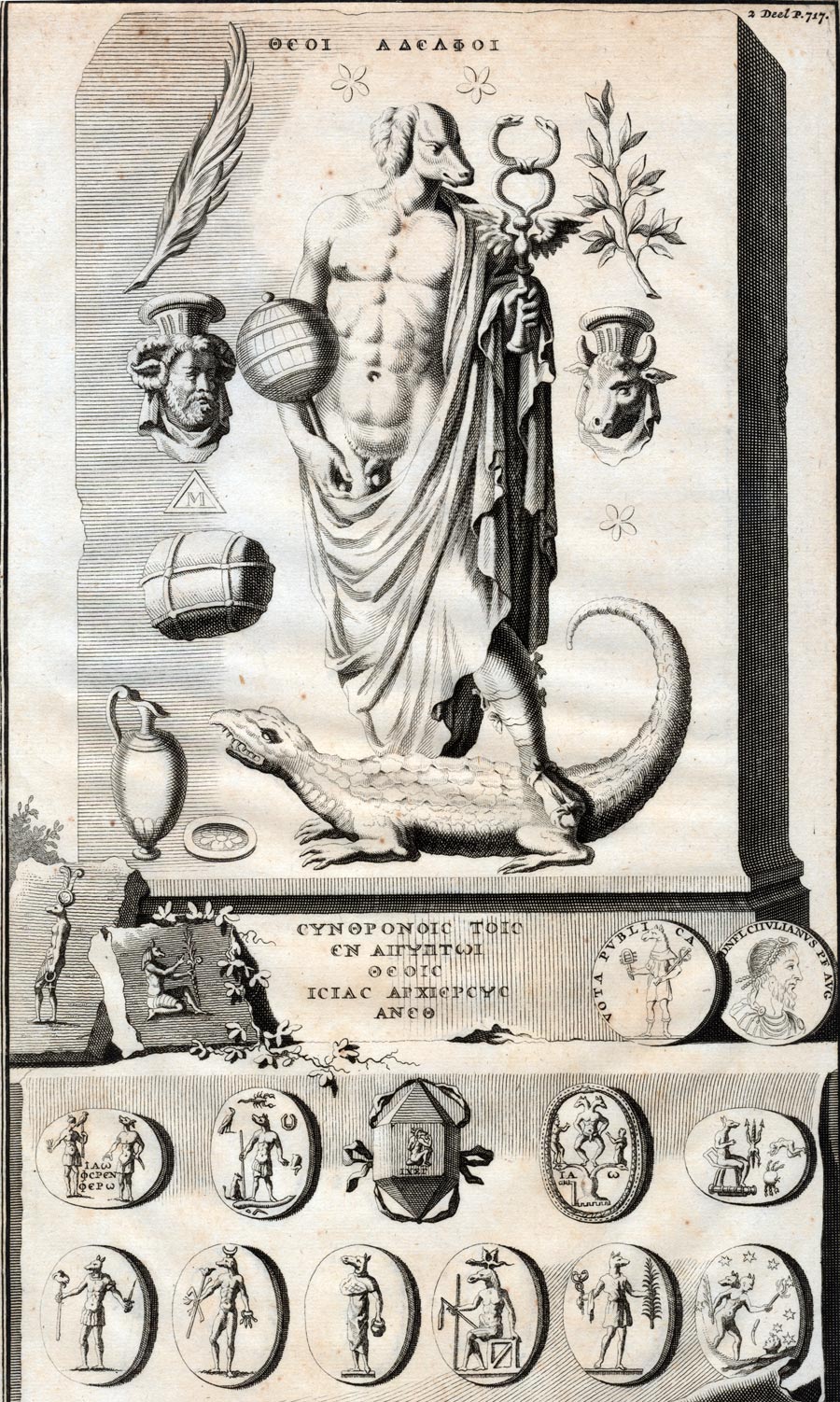Jackal Gods and the Rediscovery of Ancient Egypt
Although the Egyptian jackal gods continued to be known after their cults had disappeared, information about them came primarily from Classical sources and representations. The 17th-century proto-Egyptologist Athanasius Kircher presented a vision of Anubis based on a Roman figure of Hermanubis, but with the head of a dog more like the lap dogs then popular than the ancient original. Most early images of jackal gods drew on Kircher’s Roman Anubis rather than Egyptian representations.

Egyptian representations of jackal gods became familiar only when accurate images of ancient Egyptian art began to be published in the 19th century, starting with the lavish volumes of the Description de l’Égypte documenting the findings of the Napoleonic expedition to Egypt.
The vivid jackal god images that are best known to us come from the New Kingdom Book of the Dead papyri of Ani and Hunefer (published in the late 19th century) and the dramatic images of Anubis from the tomb of Tutankhamun (discovered in 1922). These iconic images have influenced the modern representations of jackal gods we see in contemporary popular culture.




